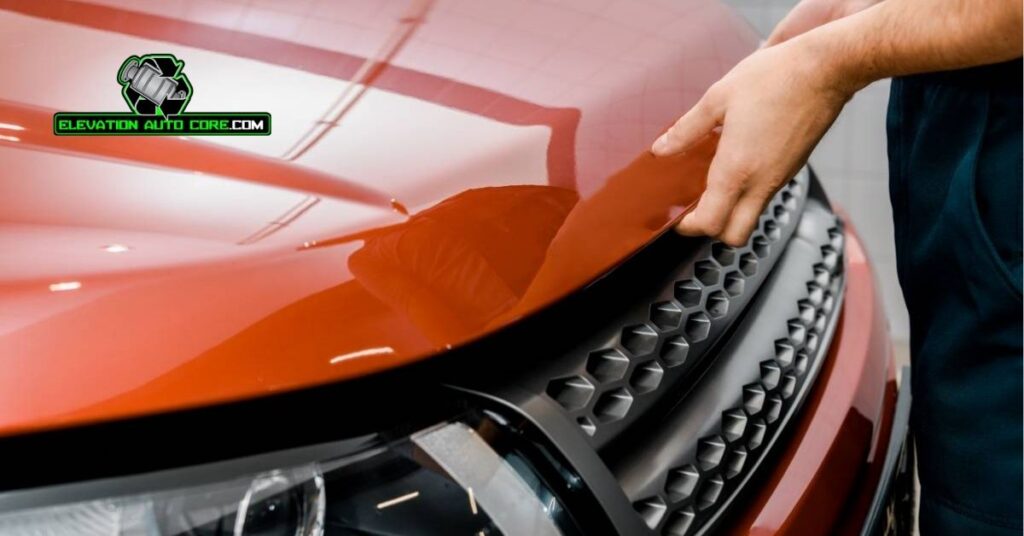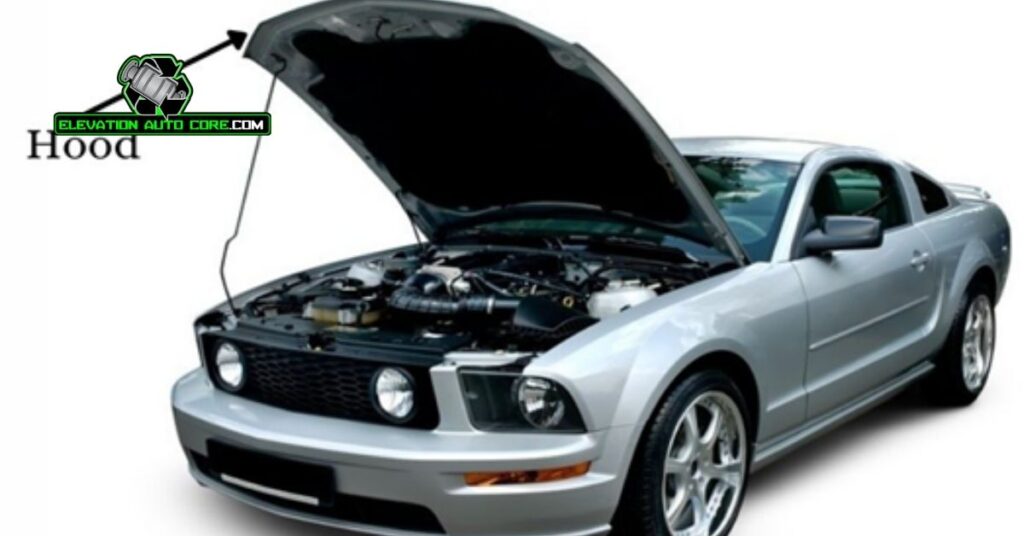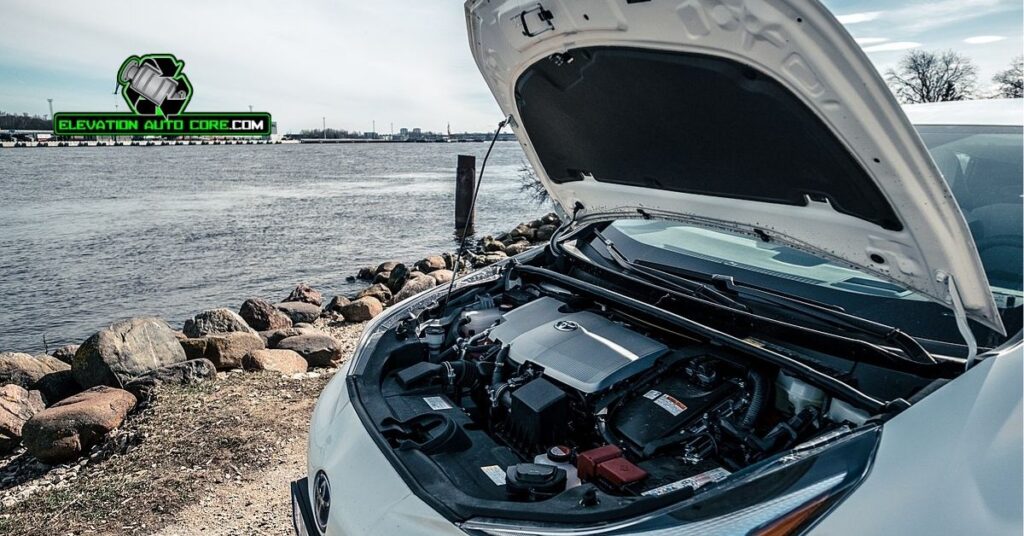What Is A Car Bonnet?
A car bonnet refers to the hinged panel covering the engine compartment at the front of a vehicle. It’s an essential component, providing access to the engine and other mechanical parts for maintenance. Depending on the car model, the bonnet’s material can vary, commonly including steel, aluminum, or fiberglass.
The bonnet also acts as a protective shield, safeguarding critical engine components from external elements such as dirt, rain, and debris. Unique designs and contours on the bonnet often contribute to a vehicle’s aerodynamics and visual appeal. Some vehicles integrate vents or scoops into the bonnet to improve airflow and cooling.
In the context of safety, some modern bonnets are equipped with pedestrian impact features like active hinges that reduce injury during collisions. You typically release and secure the bonnet through a latch system, often controlled via a lever inside the vehicle cabin. Understanding the role and features of a car bonnet supports efficient vehicle maintenance and enhances overall safety.
Functions Of A Car Bonnet

The car bonnet plays a pivotal role in safeguarding key vehicle components while also improving performance and safety features. Its design integrates functionality, protection, and efficiency.
Protection For Engine Components
A car bonnet shields vital engine parts, such as the motor, battery, and cooling systems, from external elements. It prevents dirt, debris, and moisture from penetrating the engine compartment. When the vehicle is parked, the bonnet also reduces exposure to rain or snow, preserving engine condition. Some designs offer additional insulation to guard against extreme temperatures, maintaining optimal functionality for internal components.
Aerodynamics And Safety
Bonnet shape contributes to a vehicle’s aerodynamic performance. A streamlined bonnet minimizes air resistance, improving fuel efficiency and vehicle stability. Modern designs may include vents or scoops that optimize airflow to the engine, improving cooling under high performance. In terms of safety, bonnets integrate mechanisms to absorb impact during collisions, reducing injuries to pedestrians. Certain models feature advanced crumple zones to improve impact mitigation further.
Types Of Car Bonnets

Car bonnets come in various designs customized to different vehicle needs and preferences. They balance functionality, aesthetics, and performance.
Standard Bonnet
Standard bonnets are the most common type found on everyday vehicles. These protect the engine and other essential components from external elements like dirt and moisture. Automakers typically use materials like steel or aluminum due to their durability and affordability. Their design prioritizes practicality and ease of maintenance.
Sports And Performance Bonnets
Sports and performance bonnets cater to high-performance vehicles. These often include features like vents or scoops to enhance engine cooling and airflow. Lightweight materials, such as fiberglass or carbon fiber, maximize speed and efficiency. Their aerodynamic shape complements the vehicle’s performance-oriented design.
Custom And Aftermarket Bonnets
Custom and aftermarket bonnets offer personalization and style. These may include unique designs, colors, or added vents to suit individual tastes or exact modifications. Commonly used materials include fiberglass, carbon fiber, and sometimes stainless steel. They can also provide performance benefits, such as improved cooling for modified engines.
Materials Used In Car Bonnets

The materials used in car bonnets influence performance, durability, and design. Depending on the vehicle model and purpose, manufacturers use various materials to meet exact requirements.
Steel
Steel is the most common material for standard car bonnets. It offers excellent durability, making it suitable for vehicles requiring long-term strength. With its capacity to resist impacts and environmental damage, it’s heavily favored in mass-produced cars. While heavier than alternatives, steel provides cost-effective options in manufacturing and maintenance.
Aluminum
Aluminum is often found in modern and high-performance vehicles. This lightweight material enhances fuel efficiency and vehicle stability, particularly at higher speeds. Unlike steel, aluminum resists corrosion over time, which contributes to extended bonnet lifespan in harsh weather conditions. Manufacturers choose aluminum for designs prioritizing aerodynamics and lighter frames.
Carbon Fiber And Composite Materials
Carbon fiber, along with composite materials, is typically used for sports and custom car bonnets. Known for its superior strength-to-weight ratio, it supports advanced cooling methods through additional vents or scoops. Composite options combine lightweight elements with flexibility in design, making them ideal for unique, high-performance applications. While expensive, these materials promote maximum performance benefits.
Common Problems With Car Bonnets

Car bonnets often face wear and damage due to regular use and environmental exposure. Identifying and addressing common issues helps maintain your vehicle’s performance and safety.
Difficulty In Opening And Closing
You might experience problems when a bonnet fails to open or close smoothly. Faulty latch mechanisms are a primary cause, often resulting from wear or misalignment. Debris or dirt buildup around the hinges can restrict movement, leading to stiffness. Regular inspection and lubrication of the latch system and hinges can ensure smoother operation.
Rust And Corrosion
Rust can develop on a car bonnet over time, especially when exposed to moisture and road salt. Steel bonnets are most susceptible due to their composition. If the paint layer is chipped or damaged, underlying metal gets exposed, accelerating rust. Using protective coatings and immediately addressing paint damage limits corrosion risks and prolongs the bonnet’s lifespan.
Damage From Accidents
Accidents frequently cause dents, scratches, or misalignment in the bonnet panel. Even minor impacts can weaken its structural integrity or cause gaps that disrupt aerodynamics. Severe accidents may damage both the bonnet and latch system, compromising safety. Prompt repairs or replacements are crucial for maintaining functionality and protective capabilities.
Conclusion
Understanding the car bonnet goes beyond its basic function of covering the engine. It plays a vital role in protecting your vehicle’s components, improving performance, and ensuring safety. Whether you’re dealing with standard, performance, or custom bonnets, knowing their materials, designs, and potential issues can help you maintain your car effectively.
Focusing to its condition and addressing problems like rust or latch malfunctions promptly, you can extend its lifespan and preserve its functionality. A well-maintained bonnet not only safeguards your engine but also contributes to your vehicle’s overall efficiency and appearance.

